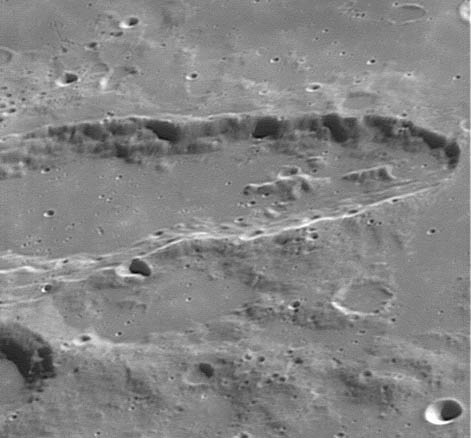April 1, 2005
LPOD Image of the Month - March 2005
Image Credit: Wes Higgins |
|
LPOD Image of the Month - March 2005 Congratulations Wes! From March 26: Schiller is not the largest crater on the Moon but it is probably the least circular. Its length of 180 km and width of 70 km implies that it has had an unusual origin, as discussed in a previous LPOD. In this high resolution image we can examine more closely Schillers interior and surroundings. I placed the image with south up to better show the hints of downslope movement on the walls. The walls also show a smoothed-over remnant of a single large terrace. The smooth floor is broken by a few dozen small crater pits, those in clusters are probably secondaries. Smooth material also fills the floors of many nearby craters. As near Pitiscus this smooth material looks like mare lava, but lacks the dark color at high sun that is caused by the iron and magnesium in mare basalts. The prevailing theory is that light smooth plains are fluidized ejecta widely dispersed by the formation of the Orientale basin. The problem with this explanation is that counts of craters on Schillers smooth floor implies that that material is 100 million years younger than the Orientale formation. Another possibility is that the smooth material is normal basalt, veneered with bright dust from later impacts. Such cryptomaria exist nearby, but small craters in Schiller dont have dark haloes from underlying basalt, so that explanation doesnt work either. As I said yesterday, some - maybe all - light-hued smooth plains may be an unsampled type of volcanism, but so far there is no proof. Yesterday's LPOD: S by SE Tomorrow's LPOD: Purblind? No! |
|
Author & Editor: |
COMMENTS?
Register, Log in, and join in the comments.




